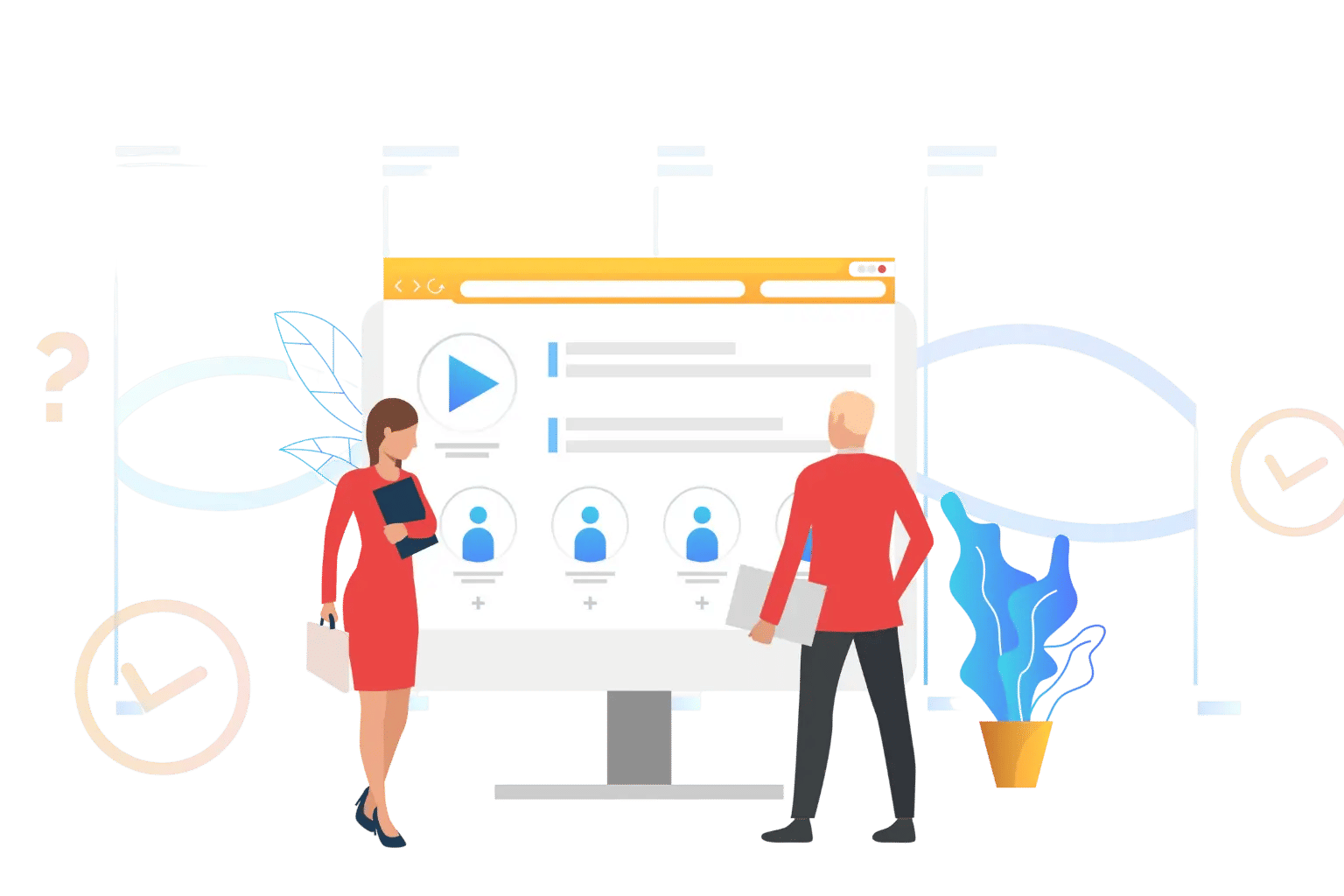
Guide to Building an Effective Paperless Onboarding System
Onboarding is the first real experience a new employee has with a company after getting the job. It sets the tone for how they feel, how fast they settle in, and how confident they are when they start work.
✨
Quick Read
Summary generated by AI, reviewed for accuracy.
A paperless onboarding process replaces outdated paperwork with a smooth, digital experience. From sending offer letters to completing forms and training online, new hires can get started anytime, anywhere no printing, scanning, or office visits required.
With digital checklists, e-signatures, and a central onboarding portal, HR teams save time while new employees feel more prepared and welcomed. It’s faster, cleaner, and perfect for today’s remote and hybrid work environments.
Too busy to read?
Click here to listen on the go!
In the past, automated employee onboarding was filled with papers, office visits, and repeated instructions. But today, companies are turning to paperless onboarding a smarter, faster, and more flexible way to welcome new hires.
In this blog, we will walk you through the step-by-step paperless onboarding process, starting from the moment a candidate accepts the job offer, all the way to their first day on the job.
What Is Paperless Onboarding?
Paperless onboarding is a fully digital onboarding process that replaces printed forms, manual signatures, and physical handbooks with online tools. It allows new hires to complete everything they need to get started documents, training, introductions, and setup through an online platform, from any device.
It’s more efficient for HR, easier for the employee, and fits the needs of remote and hybrid teams.
Why Paperless Onboarding Software Matters
Before we dive into the steps, let’s quickly understand why this matters:
- HR saves time and avoids repetitive work.
- Everything is tracked, stored, and secured digitally.
- It works no matter where employees are located.
- It reduces paperwork waste and printing costs.
Now, let’s go through the process, step by step.
Step 1: Job Offer Is Sent and Accepted
The paperless onboarding software journey starts when a candidate accepts their job offer.
What Is Paperless Onboarding?
Paperless onboarding is a fully digital onboarding process that replaces printed forms, manual signatures, and physical handbooks with online tools. It allows new hires to complete everything they need to get started documents, training, introductions, and setup through an online platform, from any device.
It’s more efficient for HR, easier for the employee, and fits the needs of remote and hybrid teams.
Why Onboarding Software for Remote Workers Is Important
Starting a job from home is not always easy. New hires can feel a bit lost without being around the team. No quick chats, no office vibe it’s just different. That’s why some companies use onboarding tools. It helps guide people through their first days, without needing someone to explain everything over and over.
This kind of software keeps stuff in one spot. You can upload forms, share training videos, and help people know what to do next.
Here’s how it helps:
- Fewer emails — everything’s in the system.
- Helps people feel part of the team — even if they’re far away.
- Everyone gets the same info — no one’s left out.
- Clear steps — with messages and meeting links built in.
Why Paperless Onboarding Software Matters
Before we dive into the steps, let’s quickly understand why this matters:
- HR saves time and avoids repetitive work.
- Everything is tracked, stored, and secured digitally.
- It works no matter where employees are located.
- It reduces paperwork waste and printing costs.
Now, let’s go through the process, step by step.
Step 1: Job Offer Is Sent and Accepted
The paperless onboarding software journey starts when a candidate accepts their job offer.
What happens:
- The offer letter is emailed as a secure PDF or sent through an HR system.
- The candidate signs the document electronically using tools like DocuSign or Adobe Sign.
- Once accepted, they’re added to the onboarding system and tagged as a “new hire.”
This step makes everything official and digital from the start.
Step 2: Welcome Email and Onboarding Portal Access
After accepting the offer, the new hire receives a welcome email. This is a simple but powerful step that helps them feel valued.
What the welcome email includes:
- A friendly message from HR or their manager.
- Login details to the onboarding portal.
- A brief outline of what to expect next.
The onboarding portal is a personalized dashboard where all tasks, documents, and updates are available in one place. No more paper folders or confusing email threads.
Step 3: Digital Forms and Document Uploads
Now the paperwork part begins but digitally.
Common tasks in this stage:
- Filling out tax forms (like W-4, I-9 in the US)
- Providing personal details (address, emergency contacts, bank info)
- Uploading scanned IDs or certifications
- Reviewing and signing employment agreements, NDAs, and policies
The system ensures all required fields are filled and forms are submitted correctly, helping HR avoid errors and delays.
Step 4: Pre-boarding Training and Company Orientation
Before day one, new hires can go through short training modules and orientation materials. This helps them learn about the company, culture, and expectations in advance.
Typical content may include:
- Introduction to company values and mission
- Organizational structure and leadership overview
- Code of conduct, harassment policy, safety rules
- Overview of tools and platforms used
- Basic role-specific information
These can be shared as videos, PDFs, slides, or short quizzes. It’s all done at the employee’s pace, and the system tracks what’s been completed.
Step 5: IT Setup and Account Access
If the employee is going to be using company tools, they’ll need access before they start.
What HR or IT teams usually provide:
- Company email login
- Access to internal systems or apps
- Software installations or cloud tool links
- Instructions for setting up multi-factor authentication or VPN
In paperless onboarding, these instructions are shared through the portal. Some systems even allow automatic provisioning of access rights based on the employee’s role.
Step 6: Meet the Team (Virtually)
Connecting with the team helps reduce first-day anxiety.
Some ways to make this happen:
- Share a “Meet Your Team” section in the onboarding portal
- Schedule a welcome video call with the team
- Share an organizational chart with photos and titles
- Create a short welcome video from the manager
Even for remote teams, these virtual introductions create a sense of belonging before the employee officially starts.
Step 7: Checklists and Progress Tracking
This step helps both the employee and HR stay on top of things.
The checklist may include:
- Forms submitted
- Training modules completed
- IT setup done
- Intro meeting scheduled
- Day one schedule reviewed
The system shows which tasks are done and what’s still pending. This gives HR visibility into each hire’s progress without the need to send follow up emails.
Step 8: First Day Preparation
The final step is getting everything ready for the employee’s first day.
HR may share:
- First-day schedule (who they’re meeting, what they’ll do)
- Expectations for the week
- Dress code, work hours, and break policies
- Login info and access instructions (again, just in case)
Some companies also mail a welcome kit or swag bag but this is optional. The key is to make the new hire feel comfortable and informed.
Bonus: Post-Onboarding Survey
While it’s not always included, some HR teams use short surveys to gather feedback on the onboarding process.
Questions might include:
- How easy was it to complete the tasks?
- Did you feel prepared for your first day?
- What can we improve in this process?
This feedback helps HR teams improve the onboarding experience for future employees.
Benefits of Following a Paperless Onboarding
Let’s quickly recap the biggest benefits of going paperless with your onboarding:
- It saves time for HR and new hires
- Reduces mistakes and missing information
- Works across locations and time zones
- Makes training and setup smoother
- Creates a consistent, professional experience
- Helps employees feel confident and cared for
And most importantly it sets the tone for a better employee journey.
Conclusion
A smooth, well-organized paperless onboarding process can make all the difference in how a new hire feels about a company. Going paperless is not just about getting rid of paper it is about creating a smarter, faster, and more supportive paperless onboarding process from start to finish.
By following a step-by-step paperless employee onboarding process, HR teams can ensure every employee starts strong regardless of their location or role. When people feel prepared and welcomed, they are more likely to stay, perform well, and become valuable team members.
Ready to modernize your onboarding?
Start with a 14-day free trial or book a personalized demo today to see how paperless onboarding can transform your hiring journey.
Join Our Creative Community
Frequently Asked Questions
What is the difference between digital and paperless onboarding?
While both terms are often used interchangeably, digital onboarding covers the entire virtual experience including training, tools access, and team introductions whereas paperless onboarding focuses more on eliminating physical paperwork by using e-signatures, online forms, and digital document management.
Is paperless onboarding suitable for industries with strict compliance needs?
Yes. Many paperless onboarding systems are built with compliance in mind, offering secure document storage, audit trails, e-signatures, and data encryption. Just ensure your system aligns with local labour laws and industry-specific regulations (like, GDPR).
Is paperless onboarding suitable for industries with strict compliance needs?
Yes. Many paperless onboarding systems are built with compliance in mind, offering secure document storage, audit trails, e-signatures, and data encryption. Just ensure your system aligns with local labour laws and industry-specific regulations (like GDPR, etc.)
How long does it take to implement a paperless onboarding system?
Implementation time varies based on company size and the tools selected. For small to mid-sized businesses, setup can take a few days to a couple of weeks. Larger enterprises may need more time for integration and customization, but most systems offer plug-and-play onboarding templates to speed up the process.
Can paperless onboarding improve employee retention?
Yes. A smooth, engaging onboarding experience helps new hires feel welcomed, informed, and confident from day one. This early positive impression can significantly boost job satisfaction and reduce early turnover, ultimately supporting stronger long-term retention.





_JiluXJRGNl.svg)



















